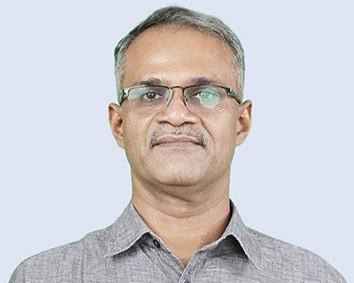In a labour surplus economy, one may expect the land market to be inactive since households have a propensity to hold on to their present landholding while trying to expand their total landholding through purchase of additional land. The inactive nature of the market for land in India has drawn the attention of economists and other social scientists. In 2010, the Foundation of Agrarian Studies conducted a survey in three villages of West Bengal — Kalmandasguri in Cooch Behar district, Amarsinghi in Malda district, and Panahar in Bankura district. Findings from these three villages show that, contrary to popular perception, there were a sizeable number of land transactions in the three villages. This note discusses some features of the land sale and purchase market in the three villages.

Land remains a critical asset for rural households. Not only does it account for a major part of total assets, but ownership of land is key to the acquisition of other assets. It is through mortgage of land that most formal and informal loans are taken and therefore land is seen as a safety net through which one can survive a sudden financial loss. West Bengal has been one of the few states in India to have implemented land reforms after Independence. According to the annual report of the Ministry of Rural Development 2006-07, 4.89 million acres of land were distributed in the first 60 years of independence. More than 20 percent of this redistributed land was in West Bengal (Mishra 2007, cited in Ramachandran 2011).
The data collected by the Project on Agrarian Relations of India (PARI) are in the form of detailed household level information on sales and purchase of land in three villages in West Bengal. A census survey of 127 households from Amarsinghi, 147 from Kalmandasguri, and 248 from Panahar was done in 2010. The survey asked the head of household about all sales and purchases of land from the time he/she became the head of household.
Although there can be recall errors, the chances of correct reporting increase if the land transaction has taken place within the lifespan of the present head of the household. In case of the present study, the average age of the head of the household reporting sale/purchase is 50 in Panahar and 51 in case of both Amarsinghi and Kalmandasguri. Given that the reported land transactions took place in the 20-25 years preceding the survey, when the head of the household was in his/her 20s, it is likely that they were able to recollect details of land transactions.
We find a total of 162 sale and purchase transactions in Kalmandasguri, 166 in Panahar and 107 in Amarsinghi in the thirty years prior to the survey of 2010. A total of 38 households in Amarsinghi, 64 households in Kalmandasguri, and 68 in Kalmandasguri had participated in land market transactions after 1980. This is not a small number. Around one-third of all households in the three villages had engaged in either sale or purchase of land after 1980. In Kalmandasguri alone, 68 out of a total of 148 households had participated in the land market. The land market in the three villages of West Bengal, therefore, appears to be active.
Another important feature of the land market in West Bengal is that the amount of land purchased by residents of the three villages collectively was greater than the amount of land sold by them. After 1980, the net purchase (excess of total purchase over total sale) of land by the residents of the three villages was 47 acres. In Panahar, while 12.15 acres of land has been sold, a purchase of almost 37 acres of land has taken place. The net purchase of land was 24 acres in Kalmandasguri. In Amarsinghi however, total sale was in excess of total purchase (by two acres).
PARI data on sale and purchase of land also show a rise in the number of land transactions between 1985 and 1995 and a further rise between 1995 and 2005, which is the period after liberalisation. Most of the sale transactions of land in the three villages were after 1991. Panahar, which has a significantly higher number of households (248) than Kalmandasguri (147) and Amarsinghi (127) does not show a higher frequency of land transactions. Of the three villages, Kalmandasguri in north Bengal had the most active land market, with 77 land transactions between 1995 and 2005.
This tendency to sell land has been observed in the period in which the Indian economy and Indian agriculture experienced a sea change in the policy regime from state intervention to market reform. (Bhattacharya and Bhattacharya 2007).
While further work remains to be done on the present data, within the ambit of the present study, there is ample evidence which suggests that the land market in the three study villages is active. This is in contrast to the literature which states that that in a less developed country like India where land is the basic factor of production, and there is a situation of surplus labour, the market for land is assumed to be inactive. In these three villages, land is an important source of livelihood for a majority of the population. Nevertheless, the land market in Amarsinghi, Kalmandasguri, and Panahar is far from inactive.
References
Bardhan, P. K. (1973), “Size Productivity and Return to Scale: An Analysis of Farm Level Data in Indian Agriculture,” Journal of Political Economy, Vol. 81, No. 6, pp. 1370-1386.
Bardhan, P. K. (1984), Land, Labour and Rural Poverty: Essays in Development Economics, Oxford University Press, Delhi.
Basu, K. (1986), “The Market for Land: An Analysis of Interim Transactions,” Journal of Development Economics, Vol. 20, No. 1, pp. 163-177.
Basu, K. (1990), Agrarian Structure and Economic Development, Harwood Academic Press, Chur, Switzerland.
Bhaduri, A. (1983), Economic Structure of Backward Agriculture, Cambridge University Press.
Raj, K. N. (1970), “Ownership and Distribution of Land,” Indian Economic Review, Vol. 5, No. 1, pp. 1-37, 41-42.
Bhattacharyya, M., and Bhattacharyya, S. (2007), “Agrarian Impasse in West Bengal in the Liberalisation Era,” Economic and Political Weekly, Vol. 42, No. 52, pp. 65-71.
Ramachandran, V. K. (2011), “Classes and Class Differentiation in India’s Countryside,” World Review of Political Economy, Vol. 2, No. 2, pp. 646-670.
Sarap, K. (1996), “Land Market Transactions in Rural Haryana,” Economic and Political Weekly, Vol. 31, No. 39, pp. A106-A115.
About the author
Abhinav Kapoor is a graduate student at the School of Planning, Design and Construction at Michigan State University. He previously worked as a Senior Economist at the Foundation.
















































































